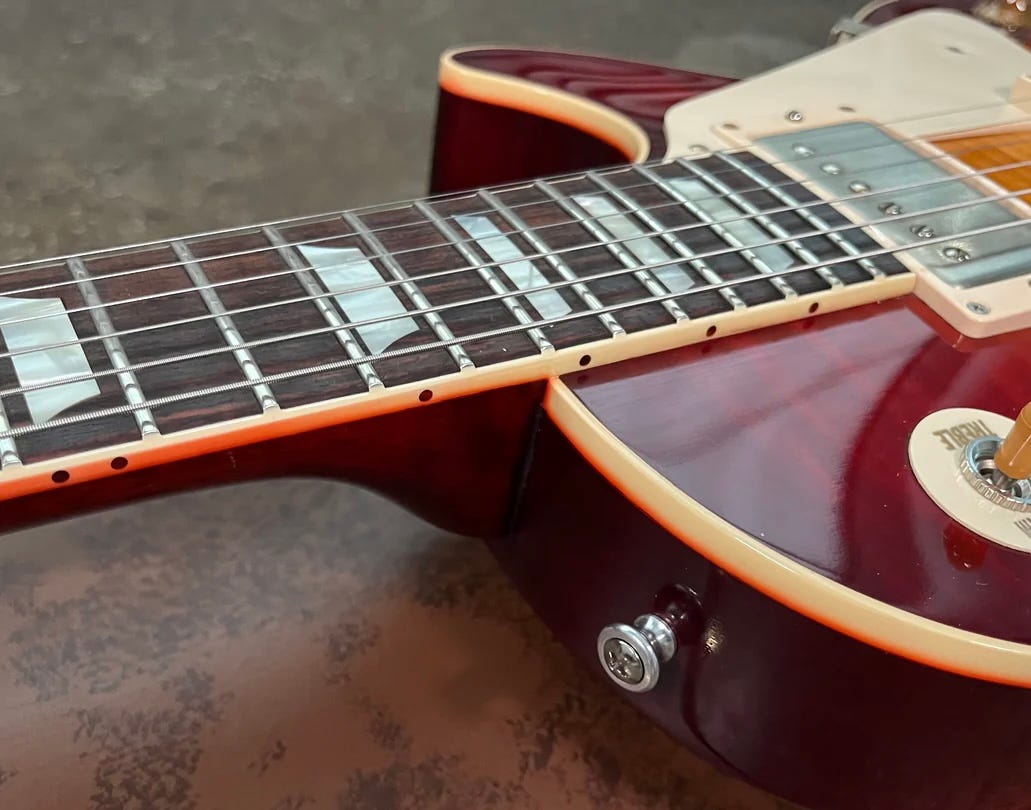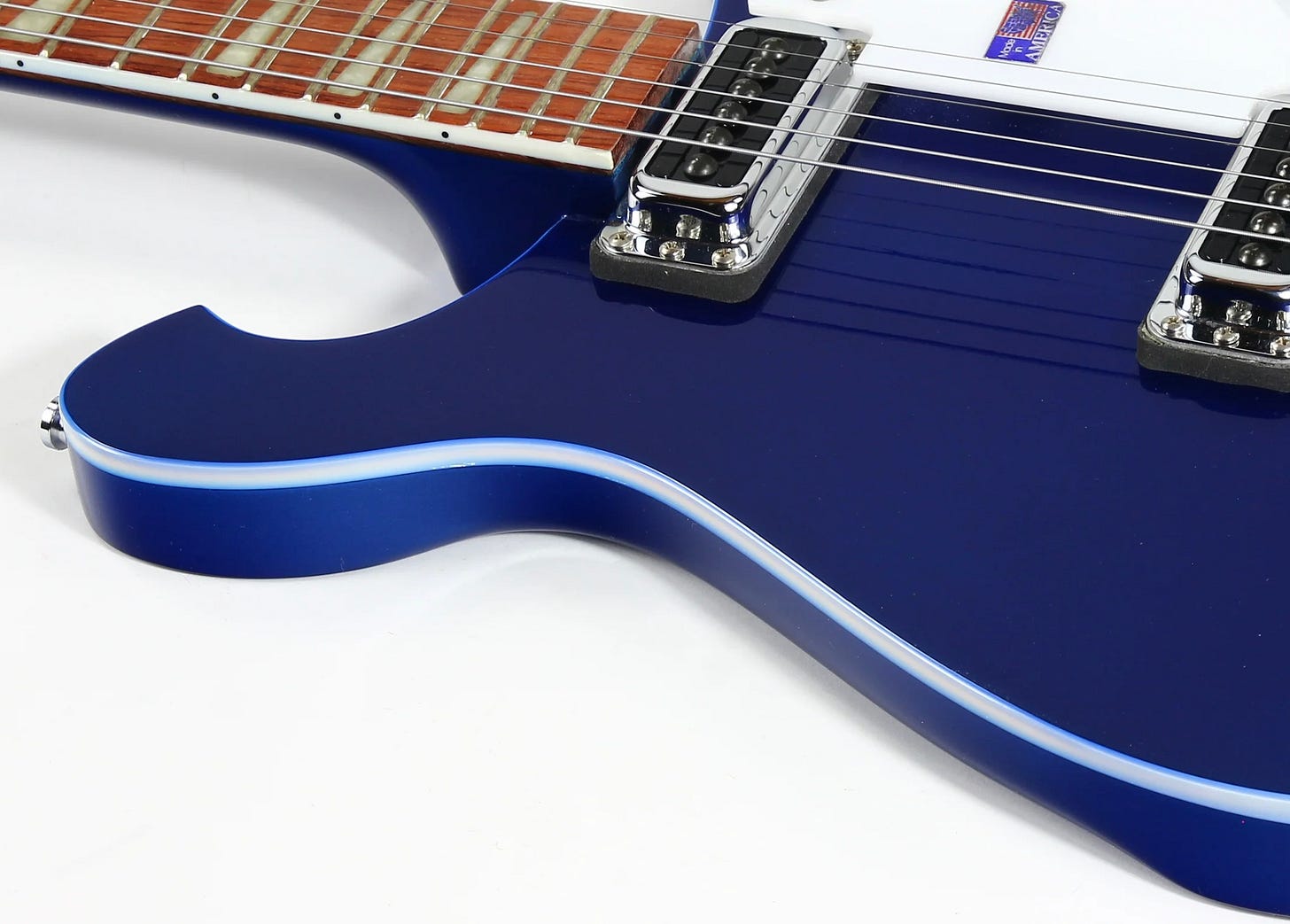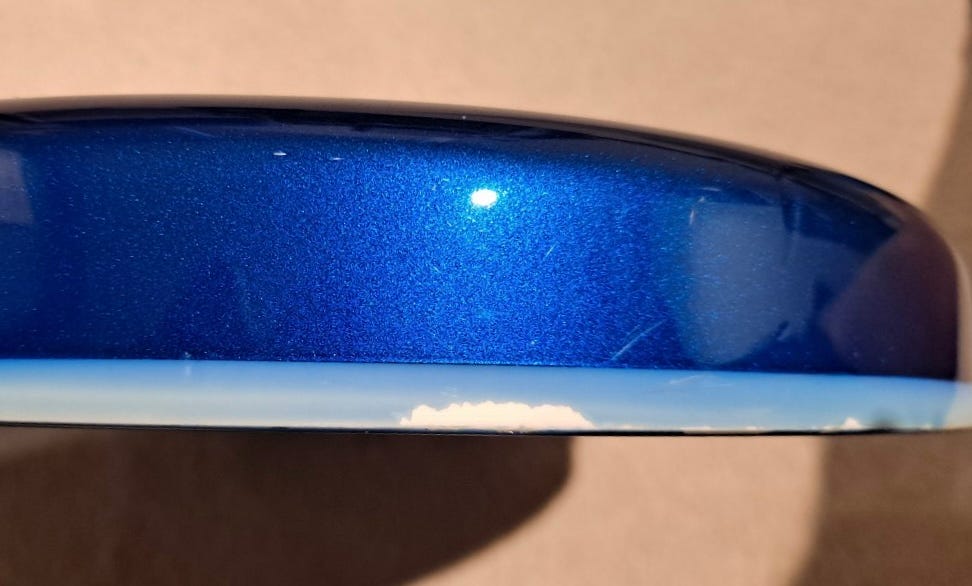Quick: say that ten times fast!
Now that we’ve gotten that out of our systems, let’s talk about binding bleed. What probably springs to mind when you hear that term is the pinkish tinge the binding on vintage (and reissue!) Gibson guitars can develop over time.

That bleeding is the result of the red aniline dye used to color the neck and back of the guitar leaching into the celluloid binding material and literally changing the binding’s color where it does. While Midnight Blue binding bleed may LOOK similar, it is not.

It’s a little difficult to spot at first in photographs—it’s much more obvious in person—but compare the color of the neck binding and the body binding above and it’ll jump out at you.
Here’s the key difference. In the Gibson example above, the celluloid binding itself has changed color. Permanently. In the Rickenbacker example, if you scrape the clear coat off the ABS binding it will still be white. Because it’s not the binding that the finish has leached into, it’s the clear coat. It’s happening “everywhere” on the guitar, but is only really visible over the white binding. So technically NOT binding bleed.

So why have I never heard of this before, you may ask? Because it only happened for a brief period of time, and only on Midnight Blue guitars. So what happened during that brief period of time, and why did it only affect Midnight Blue?
Well…we can make a more than educated guess. We know (because it later came out) that in mid to late 2004 Rickenbacker made a change to the Midnight Blue paint formula. Around mid 2005—because it took a while to manifest—people started noticing the issue and complaining about it. In late 2005 they changed the formula again, and the problem went away. Seems pretty clear-cut, no?
Rickenbacker’s response wasn’t the best. I mean don’t get me wrong—they changed the formula pretty quickly once they realized there was a problem. But they never really copped to there being a problem with the new Midnight Blue formula—their explanation was that anti-bacterial soaps could be interacting with the CV finish. Which—maybe?—but the bleed was pretty consistent and happened as much if not more often in relatively low-touch areas. And even if that explanation was technically correct, the problem only occurred on Midnight Blue guitars with the NEW formula. Soap wasn’t the issue, it was the finish.
While Rickenbacker finishes are warrantied for a year, that’s a year from the date of production. And while some people did get their guitars refinished under warranty, it could take a while for the problem to manifest and a fair number of people found themselves outside of the warranty period once they realized there was an issue. Add to that the fact that they removed some complaints about the issue from the rickenbacker.com forum, citing “duplicate threads.” I guess that’s a fair point, but it’s not a good look. I can’t say Rickenbacker did anything “wrong,” but in the end more than a few people walked away dissatisfied with the response.
Anyway, that’s the story with Midnight Blue binding bleed. Want to learn more about…everything else? Check out our site map to see what we’ve already covered!


Great.
Now I want to buy a blue bled body binding botched guitar. Thanks a bunch! 🥺